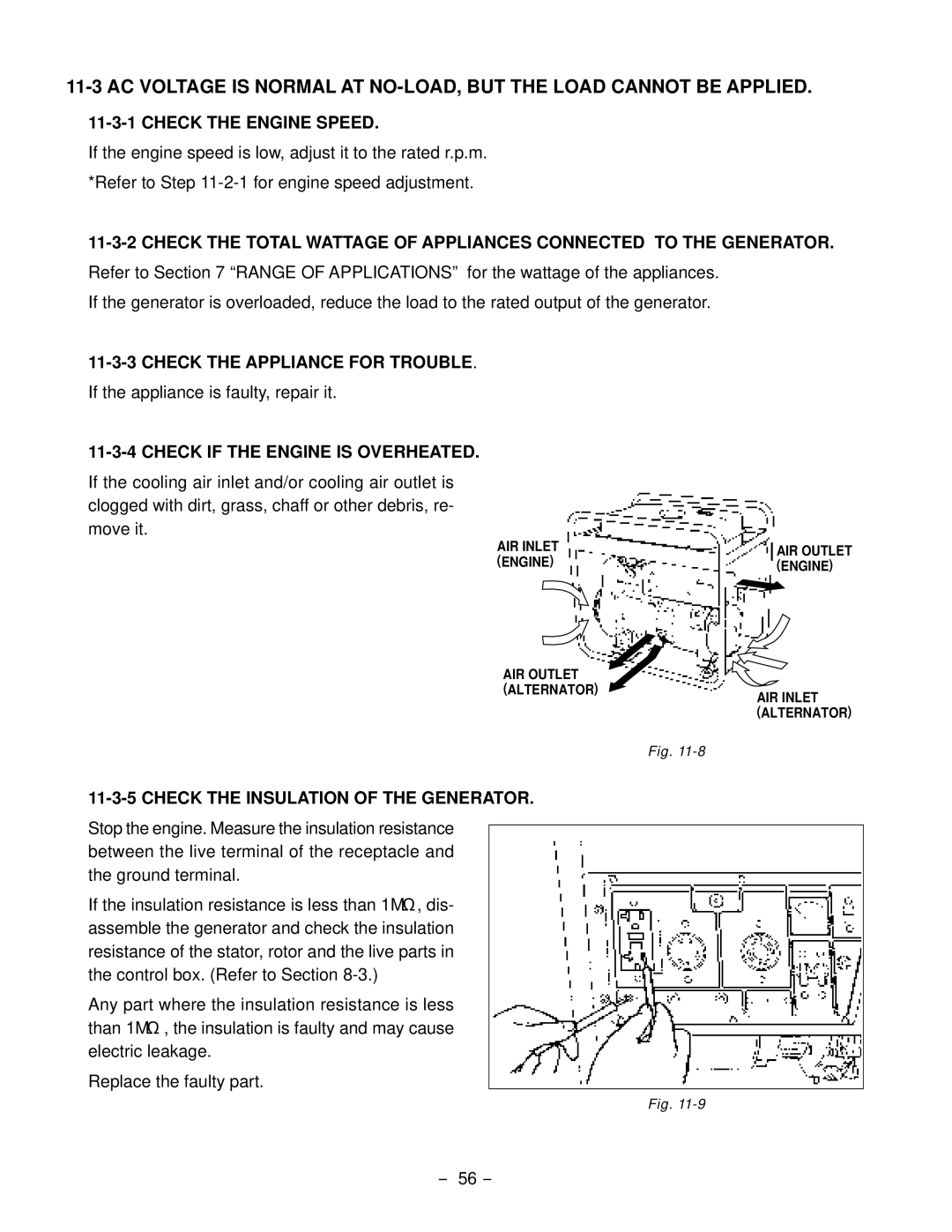
11-3-1 CHECK THE ENGINE SPEED.
If the engine speed is low, adjust it to the rated r.p.m.
*Refer to Step
Refer to Section 7 “RANGE OF APPLICATIONS” for the wattage of the appliances. If the generator is overloaded, reduce the load to the rated output of the generator.
11-3-3 CHECK THE APPLIANCE FOR TROUBLE.
If the appliance is faulty, repair it.
11-3-4 CHECK IF THE ENGINE IS OVERHEATED.
If the cooling air inlet and/or cooling air outlet is clogged with dirt, grass, chaff or other debris, re- move it.
AIR INLET (ENGINE)
AIR OUTLET (ENGINE)
AIR OUTLET
(ALTERNATOR)AIR INLET (ALTERNATOR)
Fig.
11-3-5 CHECK THE INSULATION OF THE GENERATOR.
Stop the engine. Measure the insulation resistance between the live terminal of the receptacle and the ground terminal.
If the insulation resistance is less than 1MΩ, dis- assemble the generator and check the insulation resistance of the stator, rotor and the live parts in the control box. (Refer to Section
Any part where the insulation resistance is less than 1MΩ, the insulation is faulty and may cause electric leakage.
Replace the faulty part.
Fig.
- 56 -
